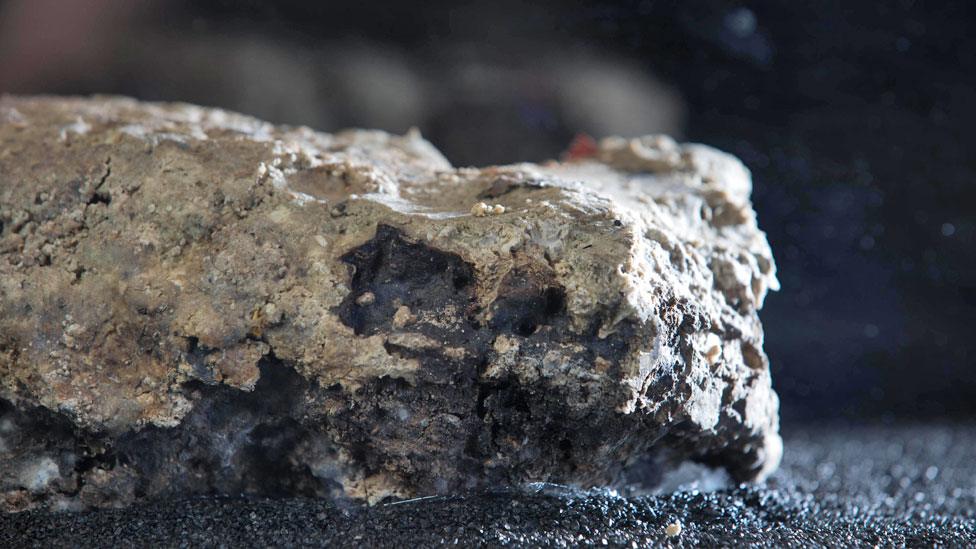London sewers blocked by record-breaking 'concreteberg'
- Published
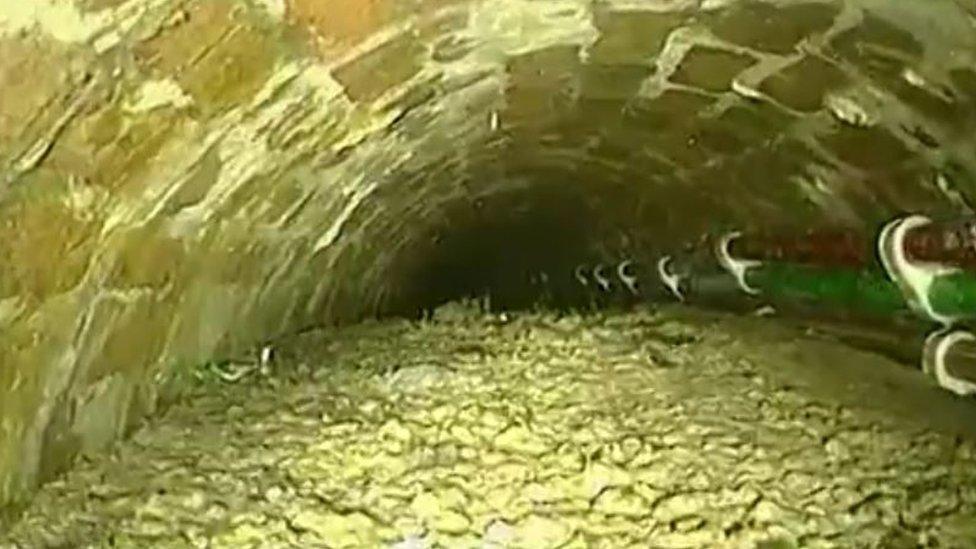
The "concreteberg" is the biggest ever seen by Thames Water
A "concreteberg", weighing as much as 20 elephants, is blocking three central London sewers.
The 330ft-long (100m) mass, weighing 105 tonnes, was caused by people pouring concrete into the sewers.
It could take two months and cost £150,000 to remove from the Victorian-era sewer under Hall Street, Islington.
Thames Water operations manager, Alex Saunders, said the concreteberg was the largest the company had ever seen.
Mr Saunders added: "Normally blockages are caused by fat, oil and wet wipes building up in the sewer, but unfortunately in this case it's rock-hard concrete.
"It's in there and set to the Victorian brickwork, so we need to chip away at it to get it removed.
"This is not the first time damage has been caused by people pouring concrete into our sewers but it's certainly the worst we've seen."
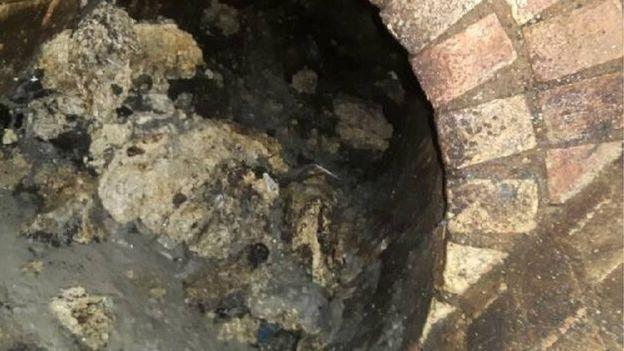
A 250m-long fatberg weighing 130 tonnes was found under Whitechapel in 2017
Workers will have to manually chip away at the mass using tools including jackhammer pneumatic drills and high-pressure jets.
Tankers will also be needed to pump out waste 24 hours a day to protect the environment and prevent sewage backed up by the blockage flooding into nearby properties.
An investigation into how the concrete got into the sewer and to recover costs is under way.
Fatbergs made of congealed fat, wet wipes, nappies, oil and condoms have been found across London over the last few years.
Last year Thames Water was called to clear 42,000 blockages caused by fat and non-biodegradable matter, a 6% increase on 2017.
In 2013, a bus-size fatberg was found in a sewer in Kingston-upon-Thames, and a 250m-long fatberg weighing 130 tonnes was found in Whitechapel in 2017.
- Published8 January 2019
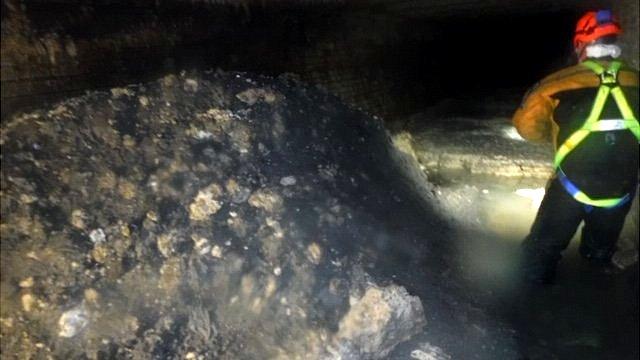
- Published12 September 2017
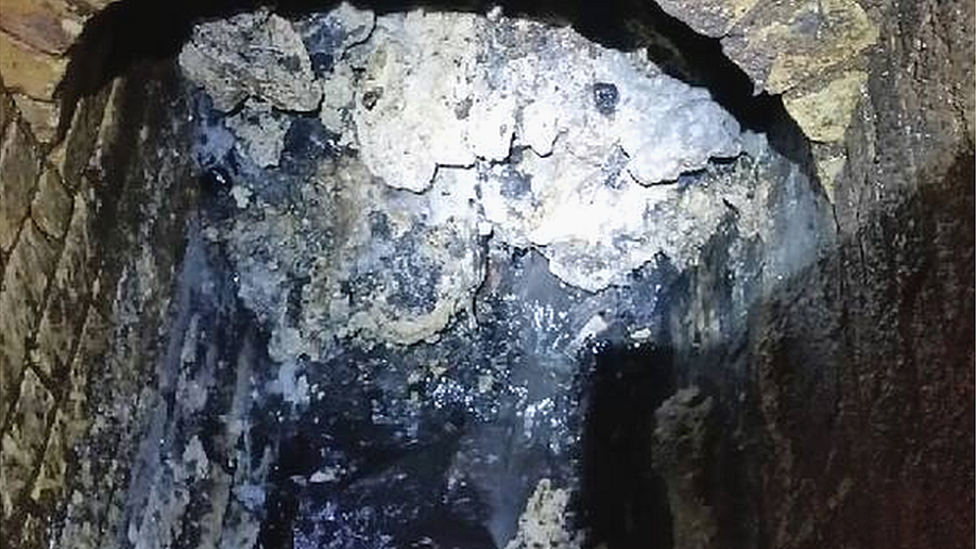
- Published27 June 2018
